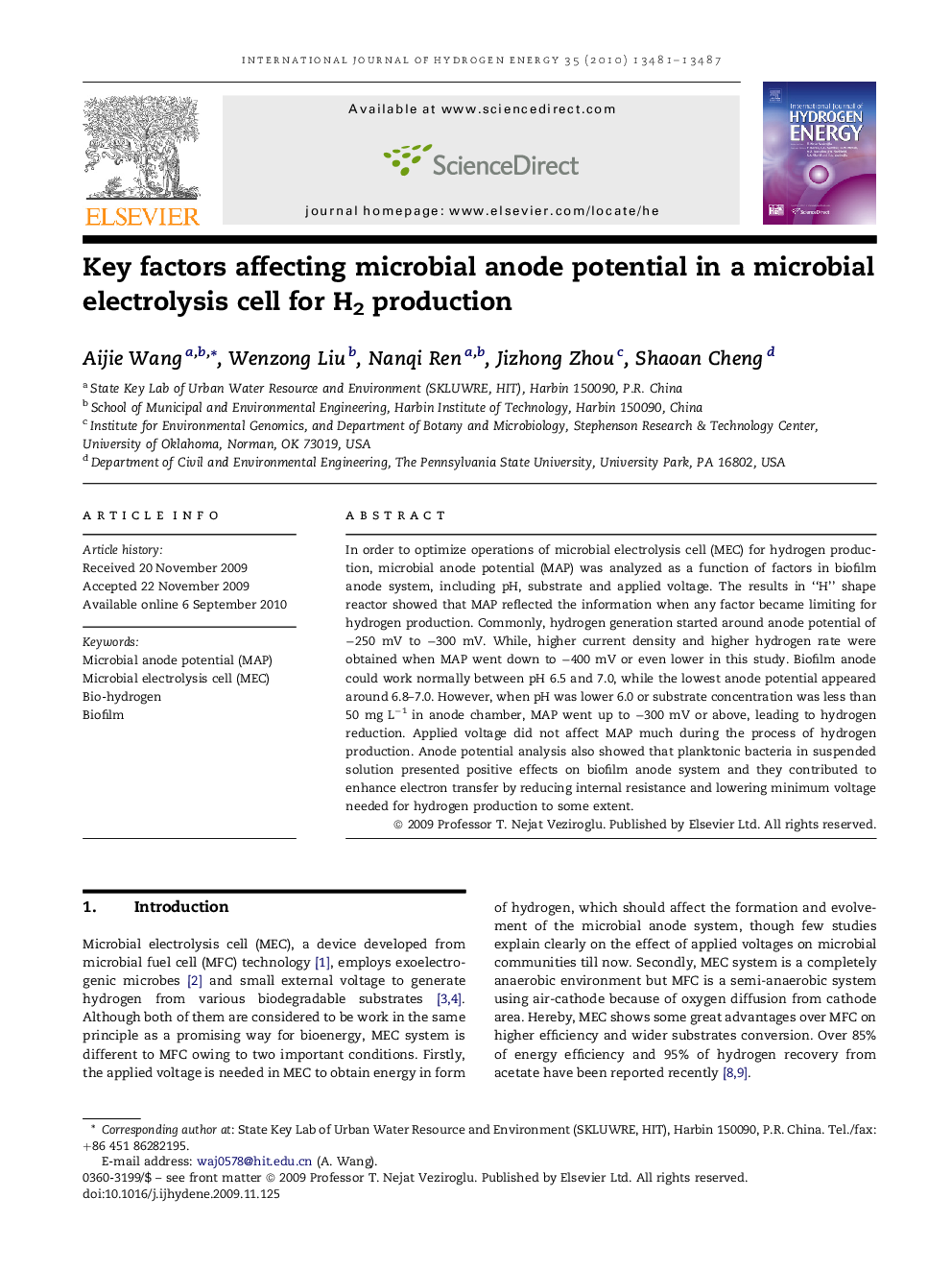| Article ID | Journal | Published Year | Pages | File Type |
|---|---|---|---|---|
| 1282716 | International Journal of Hydrogen Energy | 2010 | 7 Pages |
In order to optimize operations of microbial electrolysis cell (MEC) for hydrogen production, microbial anode potential (MAP) was analyzed as a function of factors in biofilm anode system, including pH, substrate and applied voltage. The results in “H” shape reactor showed that MAP reflected the information when any factor became limiting for hydrogen production. Commonly, hydrogen generation started around anode potential of −250 mV to −300 mV. While, higher current density and higher hydrogen rate were obtained when MAP went down to −400 mV or even lower in this study. Biofilm anode could work normally between pH 6.5 and 7.0, while the lowest anode potential appeared around 6.8–7.0. However, when pH was lower 6.0 or substrate concentration was less than 50 mg L−1 in anode chamber, MAP went up to −300 mV or above, leading to hydrogen reduction. Applied voltage did not affect MAP much during the process of hydrogen production. Anode potential analysis also showed that planktonic bacteria in suspended solution presented positive effects on biofilm anode system and they contributed to enhance electron transfer by reducing internal resistance and lowering minimum voltage needed for hydrogen production to some extent.
